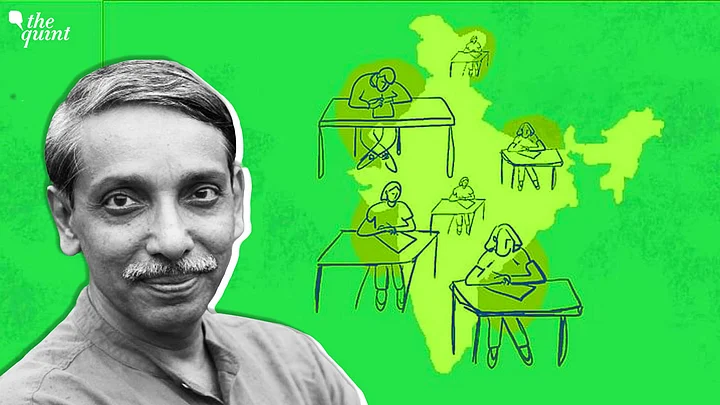In March 2022, the University Grants Commission (UGC) announced that Common University Entrance Test (CUET) would be mandatory for undergraduate admissions to all central universities. In the months that followed, there was widespread confusion among students, technical glitches in implementation were reported, and all this led to a delayed admission cycle. A year on, UGC Chairman Mamidala Jagadesh Kumar discusses how CUET 2023 will be different.
He spoke to The Quint about the steps being taken to avoid glitches, how normalisation works, and how the academic session will start by 1 August for undergraduate students this year, unlike last year when it started in November.
Excerpts from an interview:
Undergraduate admissions had been delayed throughout the COVID-19 pandemic years. Last year too, several professors said that the academic calendar was running behind schedule. Could you give us a rough timeline of the admission schedule this year?
Academic calendar running behind schedule due to COVID-19 was a cause of concern to all of us. We made some recovery last year and this year we should be back on track since COVID-19 is no more a stumbling block and the UGC has taken several steps well in advance.
This year, for instance, the CUET schedule was announced on 15 December 2022. The application process for CUET-UG will end on 31 March and the CUET-PG application process is currently open. Since CUET-UG is scheduled to be completed by 31 May and CUET-PG by the middle of June, results for both exams should be out by the end of June. Educational institutes can complete the admission process in July and academic sessions can start no later than 1 August.
Since 2022 was the first year that CUET was made mandatory for central universities, there were a few glitches – last-minute exam centre changes, glitches in systems in some centres. What are the steps being taken to make the process more seamless this year?
I agree that there were a few glitches, and students were inconvenienced. We want students to focus on their tests rather than worry about possible glitches.
This year we have already started working on identifying the centres. We now have three categories of centres — those which are dependable in terms of computing and network facilities, invigilating staff, and technical staff. We will indeed be using these centers.
The second category is those centres that need to improve their facilities. If they meet our benchmarks, we will use them.
The third category is those which do not meet our criteria. We will be dropping them this year. We will also try to give the students the first choice of test city as much as possible. If that is not possible, we will try to provide a city within 100 km of their residence. Several other measures are being worked out.
Across how many centres will the test take place this year?
We are targeting to have about 450 test centres across the country. This number may change after the application deadline, once we get to know the total number of students who want to write CUET-UG.
One of the reasons stated for implementing CUET was to provide a standardised platform for students across boards and states. How successful was this in the past year? For instance, did CUET lead to a change in the student demographic across universities?
CUET provided a level playing ground to the students irrespective of which board they came from and what percentage of marks they obtained in board exams. While we have not collected the data, informal inputs from heads of institutions do indicate that student diversity on campuses has increased. A diverse student population lets them understand the real world around them and helps them evolve into good human beings.
Last year, you highlighted that normalisation was done because difficulty varies from session to session for the same subject. Will the same formula be applied this year? Could you elaborate on how normalisation works?
We will be using the same normalisation method as last year. This is a scientific method. Raw marks are available in the shift where the student has written the test, and interpolated marks are estimated in the other shift because the student could not have written the test for a second time in the same subject. For each student, we then calculate the average of the actual raw marks in one shift and the marks obtained using interpolation in the other shift.
This method is accurate for estimating the normalised marks of candidates when the tests are held in multiple sessions with varying difficulty levels in a given subject. Since we are considering the difficulty levels across different days and normalising them, there will be a difference between the raw marks obtained by the student and the normalised score.
